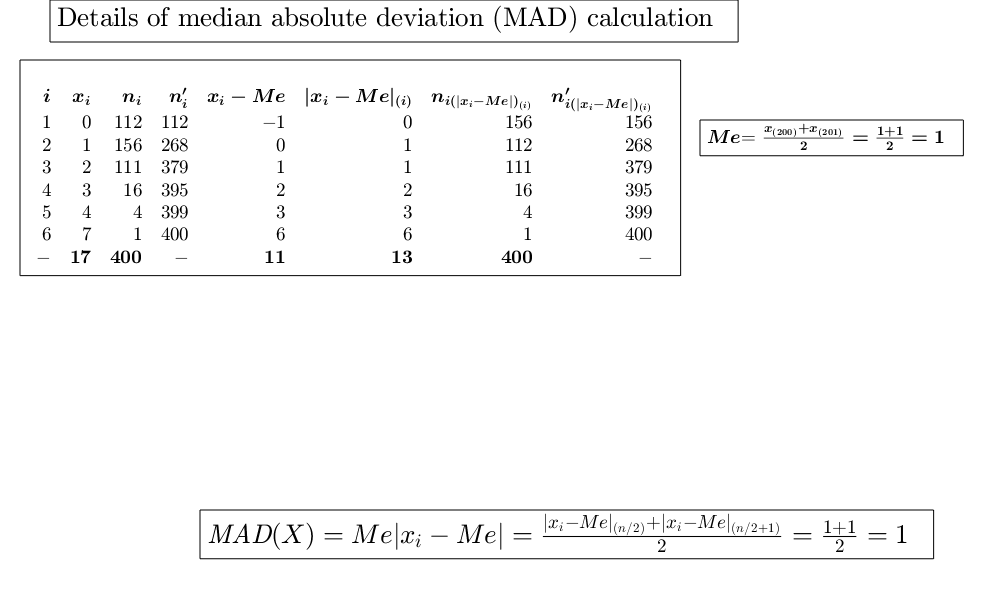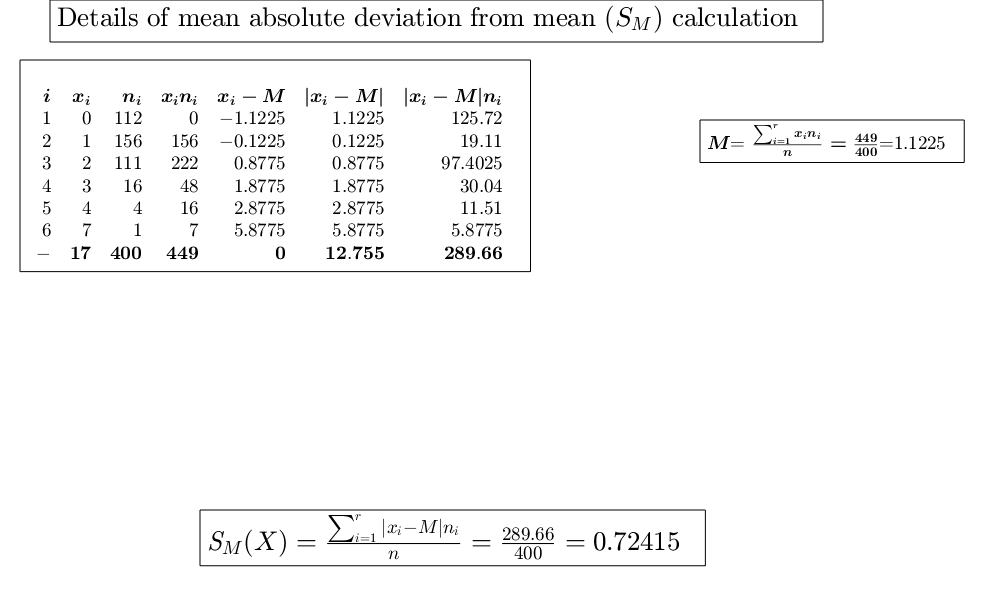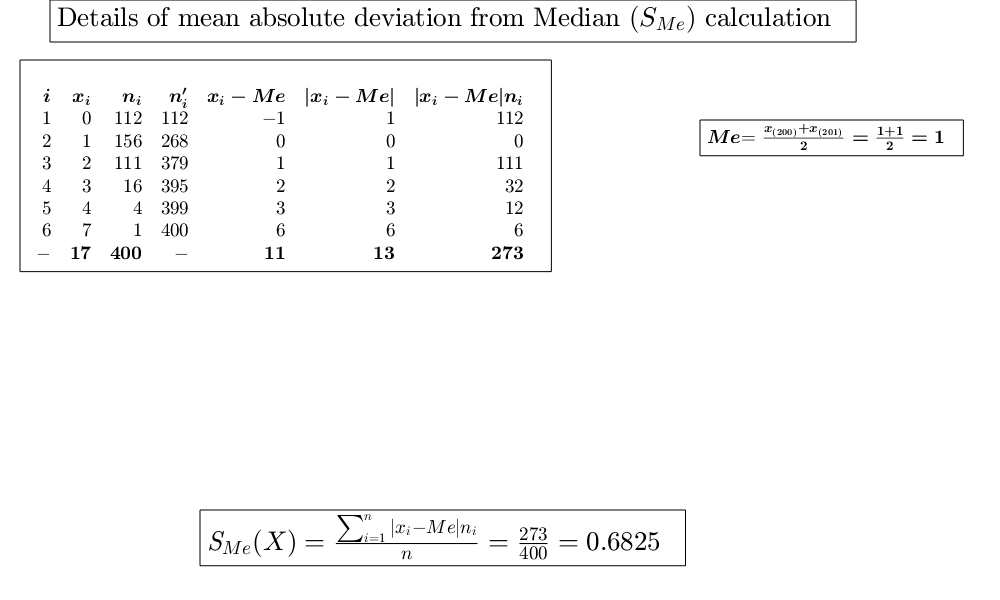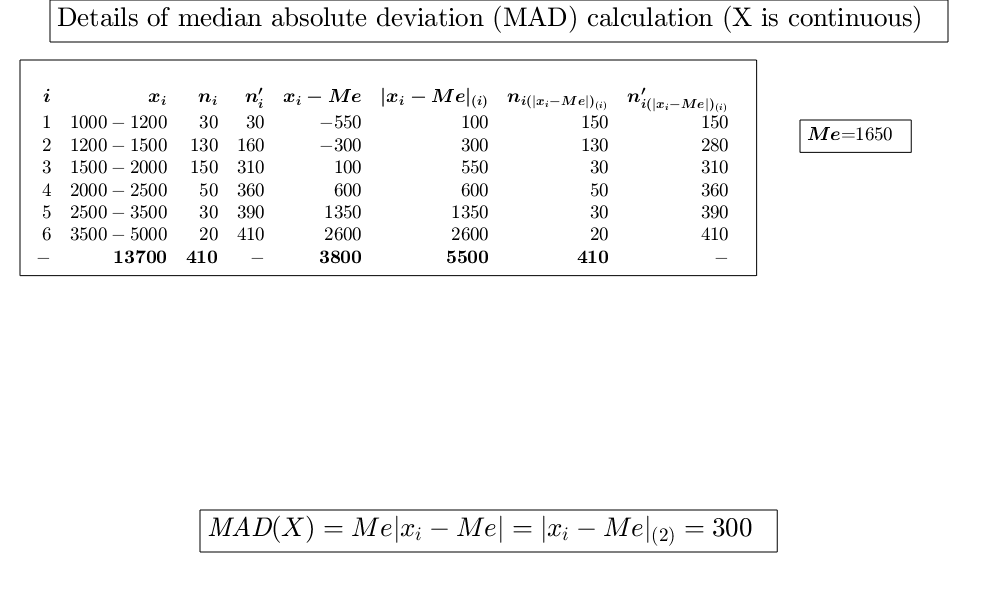Vector containing strictly numerical data. Note that if x is
referred to a continuous variable (that is option DiscreteData
is false) x(1) represents the lower extreme of the first class,
and the other values of x contain the upper extremes of the
other classes.
Data Types: double, ordered categorical
If flag=1 (default), MAD is based on medians, i.e.
median(abs(x-median(x)).
elseif flag=0, S_M is computed (mean absolute deviation) i.e.
mean(abs(x-mean(x)).
elseif flag=2, S_{Me} is computed (mean absolute deviation from median) i.e.
mean(abs(x-median(x)).
Example: 1
Data Types: double
Vector of the same length of x containing the frequencies
(weights) associated to each value of x if x is discrete or
vector with length (x)-1 if variable X is continuous. If
w is not supplied, it is assumed that all observations have the
same (relative) frequency (weight).
Example: 1:10
Data Types: double
DiscreteData : Discrete data or continuous data. Boolean.
If DiscreteData is true (default), we assume that the data
in x come from a discrete variable.
If DiscreteData is false, we assume that the data
in x come from a continuous variable.
Example - 'DiscreteData',false
Data Types - boolean
Specify optional comma-separated pairs of Name,Value arguments.
Name is the argument name and Value
is the corresponding value. Name must appear
inside single quotes (' ').
You can specify several name and value pair arguments in any order as
Name1,Value1,...,NameN,ValueN.
Example:
1
, 1:10
, 'DiscreteData',false
If flag=1 (default), MAD is based on medians, i.e.
median(abs(x-median(x)).
elseif flag=0, S_M is computed (mean absolute deviation) i.e.
mean(abs(x-mean(x)).
elseif flag=2, S_{Me} is computed (mean absolute deviation from median) i.e.
mean(abs(x-median(x)).
Example: 1
Data Types: double
Vector of the same length of x containing the frequencies
(weights) associated to each value of x if x is discrete or
vector with length (x)-1 if variable X is continuous. If
w is not supplied, it is assumed that all observations have the
same (relative) frequency (weight).
Example: 1:10
Data Types: double
If DiscreteData is true (default), we assume that the data
in x come from a discrete variable.
If DiscreteData is false, we assume that the data
in x come from a continuous variable.
Example: 'DiscreteData',false
Data Types: boolean
 MAD in a frequency distribution (discrete data).
MAD in a frequency distribution (discrete data).


